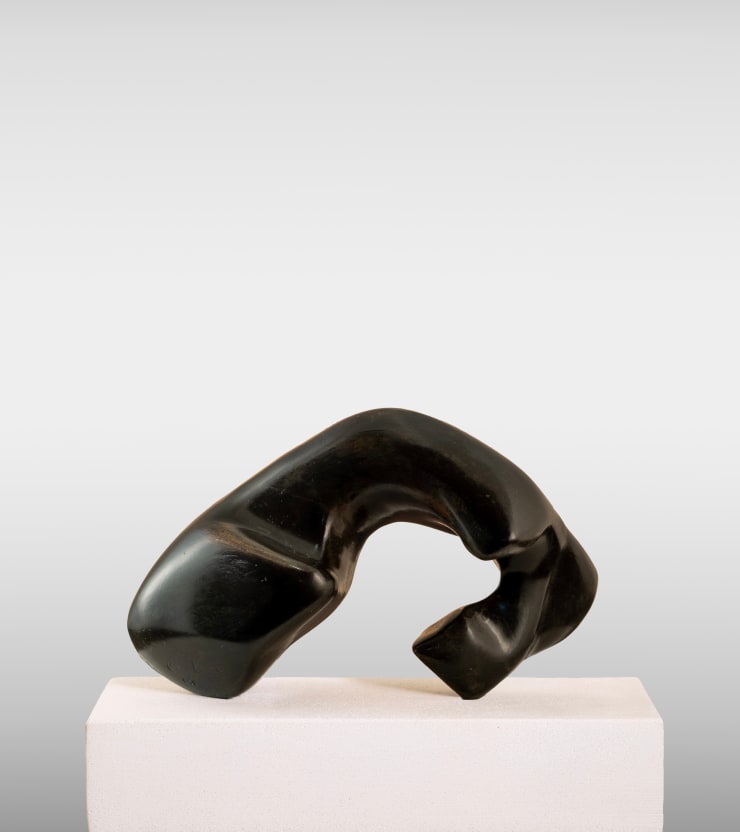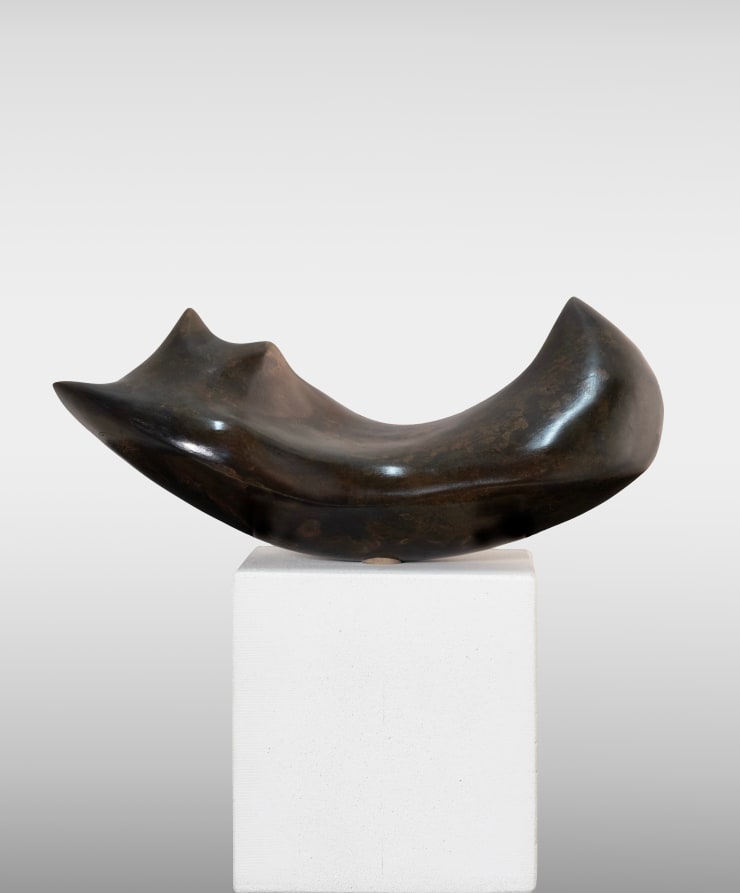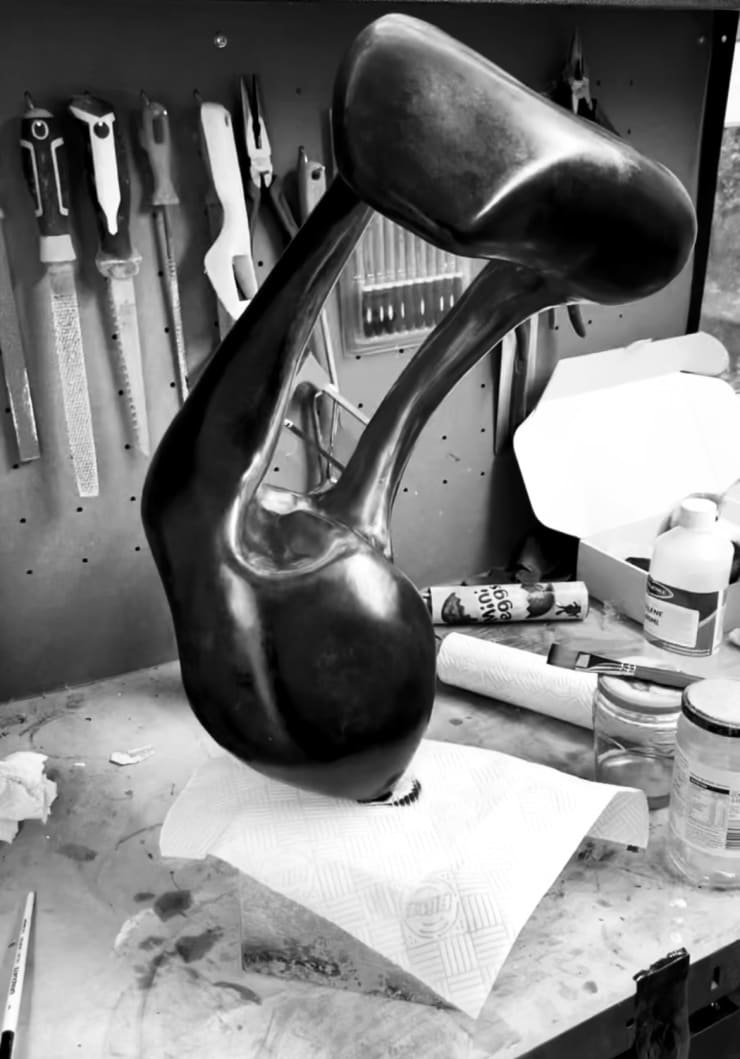-
What made you want to pursue sculpture?
I have always found sculpture a formidable expression of an artist’s inspiration. I have always been in awe of bronze works – especially the almost mystical complexity of their creation and their timeless permanence. I have always needed to express myself artistically, and I had the opportunity to start sculpting about 30 years ago and haven’t stopped since. -
-
You work with concrete to create your maquettes; what draws you to the direct carving approach?
The materiality of concrete gives me a process that is inherently slow and organic, using very few tools but a lot of sandpaper. The response of the material to being carved allows me to continuously assess and rework until the object connects with me on a sub-conscious emotive level.
-
Who or what inspires your work?
I have a deep love of mid 20th century British Art. Henry Moore, Barbara Hepworth are pioneers of abstract sculpture – and incredibly British in inspiration and in tone – they sit beautifully in the English countryside as if in a symbiotic relationship.
-
-
Your approach to patination seems integral to your work. Can you tell us more about how this has developed?
Each maquette is plastered, painted, and gilded. The final finish often resembling a possible result of natural erosion, oxidation or just age. I love having work that is born with a past! When working on bronzes, the application of patina is an intrinsic element of the final sculpture and is very subtle and refined. This is something that I have to have total control over, rather than outsourcing to a foundry.
-
What are you working on at the moment?
I am just completing my largest bronze to date which is an enlargement of a maquette and has been a very complicated work. I am finalising the patination which is also complex as part of the work is a polished mirror like finish whilst other elements are resembling aged weather beaten bronze.
Introducing: Ian Knowles
Current viewing_room








